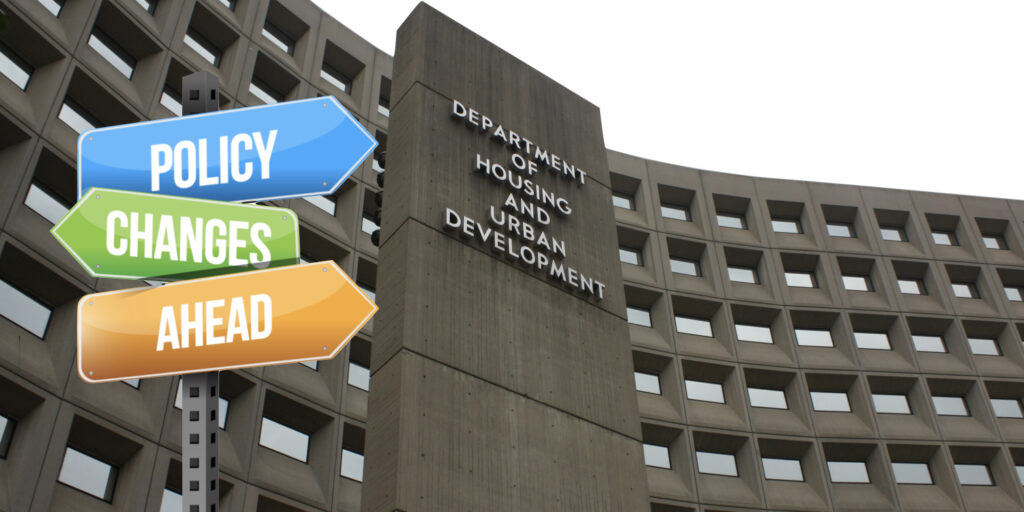Policy changes related to the Home Equity Conversion Mortgage can appear somewhat esoteric and perhaps overwhelming to the casual observer. Today we will break down some of the key proposed policy changes for the HECM that every reverse mortgage originator should understand and communicate with borrowers who may find themselves in these select situations.
Early this month the Federal Housing Administration released a draft mortgagee letter that outlines several proposed key policy changes for Home Equity Conversion Mortgages or HECM loans. The proposals are primarily focused on the servicing of HECM loans.
While not generally considered, the servicing of HECM loans is an integral element of an older homeowner being able to age in place. Today we will review some of the more notable proposed changes and what they may mean for your past HECM borrowers.
Occupancy Certification:
First is occupancy verification. Each year
[read more]
HECM borrowers must certify that the home which secures the loan is still their primary residence. The loan servicer would send out an occupancy certificate which the borrower(s) must sign to attest that the home remains their primary domicile.
In his latest book Navigating Reverse Dan Hultquist writes that borrowers must “verify his or her principal residence within 30 days before or after the anniversary date of the first day of the first month after closing”.
Unfortunately, in many instances, older homeowners disregarded these notices which put the homeowner at risk of having their HECM called due and payable. FHA proposes that mortgage servicers be allowed to verify occupancy over the phone. However, the draft mortgagee letter notes the mortgagee’s employee must sign and date the verbal verification form noting the name and number of each borrower or eligible non-borrowing spouse who verified the occupancy. In addition, mortgagees or lenders must retain an audio recording of the call.
Due and Payable exceptions:
Another proposed change allows for a delay before a mortgagee asks to have an HECM loan called due and payable for nonpayment of property taxes or homeowners insurance. To request a delay the unpaid property charges must be $5,000 or less. Documentation must be uploaded to the HERMIT (Home Equity Reverse Mortgage Information Technology) platform and establish that either the borrower could not be contacted and has met their occupancy requirement or that the borrower has expressed a willingness to repay the property charges in arrears or is already making a partial payment.
HOA Dues and HECM Repayment Plans:
Next, homeowners association dues may be included when a mortgagee is creating a repayment plan for unpaid property charges. In other words, HOA dues may be factored into an approved repayment plan.
Financial Incentives- Cash for Keys:
Lastly, and perhaps most interesting are FHA’s incentives for either the borrower or mortgagee/servicer to expedite a deed in lieu of foreclosure. The proposal would allow cash for keys or a financial incentive to be paid to the borrower by the lender who can be reimbursed by filing a claim with FHA. What’s most interesting is the proposed financial incentive for FHA to pay the servicer for having the borrowers sign and complete the deed in lieu. The same would apply to any mortgage that encourages the borrower to execute a timely sale of the property.
Conclusion:
While HECM servicing has greatly improved since HUD moved its servicing contract from Nova to Celink the role of the originator should not be disregarded. Regularly scheduled annual phone calls to check in with past borrowers not only helps to catch potential issues early, but it’s a great way to generate referrals from a client who appreciates a professional who cares enough to stay in touch well after the sale.
[/read]







4 Comments
Cash for keys is a refreshing version of handling a painful departure. It was a common method during the Great Recession for many forward mortgage departees.
Well said, Dennis.
Shannon, as usual, you make an excellent presentation on what the proposal covers.
Truly it is important that borrowers be protected against unnecessarily losing their homes in ways such as verifying home occupancy. Yet this proposal lacks meaningful protection against fraud. How will the servicer/mortgagee know that the person answering the phone is actually the borrower? While it can be argued that the present system is just as unreliable, one must question, why is improvement against fraud regarding borrower occupancy seemingly left out of this proposal. In 2022, an originator in California went door to door to see if HECM borrowers wanted to refinance their HECMs. To his surprise, he found a relatively high percentage of HECM collateral wholly occupied by renters.
Hopefully, cash for keys will have a positive impact om the MMIF. Yet it will have far less impact in the year of endorsement due not only to not knowing the percentage of those in the due and payable status who will participate in the upgraded proposal but also the impact will be based on a discounted cash flow (net present value) calculation that will not actually impact the program for up to four decades. It will have absolutely no impact on the MMIF to the extent that those who ultimately participate saw their HECMs endorsed before October 1, 2008 since such HECMs are accounted for in the General Insurance and Special Risk Insurance Fund (not the MMIF).
Thank you, Jim.